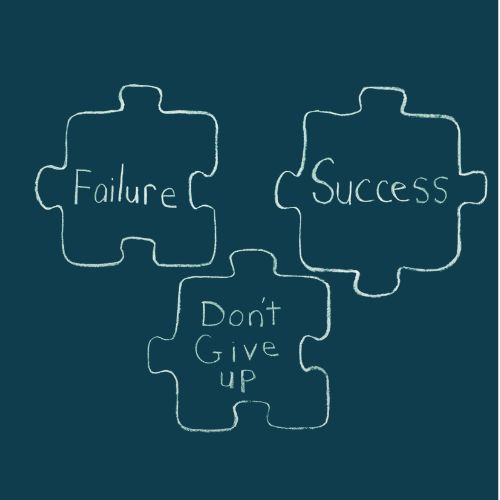
Effective Communication Techniques for Couples
Effective communication is the cornerstone of any healthy relationship. It helps couples understand each other’s needs, resolve conflicts, and strengthen emotional connections. However, communicating effectively is often easier said than done. Misunderstandings, emotional reactions, and differing communication styles can create barriers. This guide offers practical techniques for couples to enhance communication, foster understanding, and build a stronger bond.
1. Practice Active Listening
Active listening means fully concentrating on what your partner is saying rather than simply waiting for your turn to speak. It shows that you value their perspective and are willing to engage in a meaningful dialogue.
- What to do: When your partner is speaking, focus entirely on them. Avoid distractions like your phone or TV. Nod or give verbal cues (“I see,” “That makes sense”) to show you are engaged. Reflect back on what they’ve said to confirm understanding (“So what I’m hearing is…”). This builds trust and shows that you are invested in their thoughts and feelings.
2. Use “I” Statements
“I” statements allow you to express your feelings without blaming or accusing your partner. This helps prevent defensiveness and keeps the conversation respectful and constructive.
- What to do: Instead of saying, “You never listen to me,” try, “I feel hurt when I don’t feel listened to.” This approach focuses on how you feel rather than criticizing your partner, making it easier for them to understand your perspective and respond empathetically.
3. Stay Focused on the Issue at Hand
When conflicts arise, it’s tempting to bring up past issues, but doing so can derail the conversation and escalate tensions. Staying focused on the current issue allows for a more productive discussion.
- What to do: Address one issue at a time. If an unrelated problem comes to mind, note it for later but keep the conversation centered on the present concern. This reduces overwhelm and makes it easier to find solutions.
4. Avoid Interrupting
Interrupting your partner can make them feel unheard and disrespected. Allowing them to finish their thoughts without interruption shows that you value their input.
- What to do: Let your partner finish speaking before responding, even if you disagree with what they are saying. This gives both of you a chance to fully express your thoughts and makes it easier to understand each other’s viewpoints.
5. Use Non-Verbal Cues
Non-verbal communication—such as body language, facial expressions, and tone of voice—plays a significant role in how your message is received. Being mindful of these cues can help avoid misunderstandings.
- What to do: Maintain eye contact, use an open posture, and ensure your tone matches your words. For example, saying “I’m fine” with a sarcastic tone sends mixed signals. Aligning your words with positive body language and tone promotes clearer communication.
6. Take a Break When Needed
If a conversation becomes too heated, it’s okay to take a break to cool down. Continuing to talk when emotions are high can lead to saying things you may regret or escalate the conflict further.
- What to do: If the discussion is getting too intense, suggest a break by saying, “I need some time to cool off, can we revisit this in 30 minutes?” This allows both partners to calm down and return to the conversation with a clearer mindset.
7. Acknowledge and Validate Each Other’s Feelings
Validation means recognizing and acknowledging your partner’s emotions, even if you don’t fully understand or agree with them. It shows empathy and strengthens the emotional bond between you.
- What to do: When your partner shares their feelings, validate them by saying, “I can see why you feel that way” or “That must have been really hard for you.” Validation doesn’t mean agreeing with everything; it simply shows that you respect their experience.
8. Be Mindful of Timing
Timing matters in communication. Discussing sensitive topics when either partner is tired, stressed, or distracted can lead to unproductive conversations.
- What to do: Choose a time when both you and your partner can give each other full attention. Avoid initiating difficult conversations late at night or when one of you is in a rush. Creating a calm, focused environment increases the chances of a successful dialogue.
9. Check for Understanding
Miscommunications can happen even when you think you’ve been clear. Checking for understanding ensures that both partners are on the same page.
- What to do: After expressing yourself, ask, “Does that make sense?” or “Can you tell me how you understood that?” This gives your partner a chance to clarify any misunderstandings and prevents miscommunication from turning into conflict.
10. Show Appreciation Regularly
Expressing appreciation for your partner’s efforts and contributions, both big and small, keeps the relationship positive. It also reinforces the importance of open communication.
- What to do: Make it a habit to express gratitude. You can say, “I appreciate how you always listen when I need to talk,” or “Thank you for sharing your feelings with me.” Regular appreciation strengthens emotional bonds and encourages ongoing communication.
11. Be Open to Feedback
Feedback from your partner, whether positive or constructive, helps improve communication. It’s important to remain open to their input and use it to strengthen the relationship.
- What to do: When your partner gives you feedback, listen without becoming defensive. Reflect on their perspective and consider how you can apply it. For example, if they say, “I feel like you don’t listen when I talk about my day,” try to be more present in future conversations.
12. Find Compromise
In any relationship, there will be disagreements. The key is finding a solution that works for both partners. Compromise allows both individuals to feel heard and respected.
- What to do: When you reach an impasse, ask, “How can we meet in the middle?” Be willing to give a little to find a solution that satisfies both partners. Compromise doesn’t mean one person always gets their way, but it promotes mutual respect and balance.






